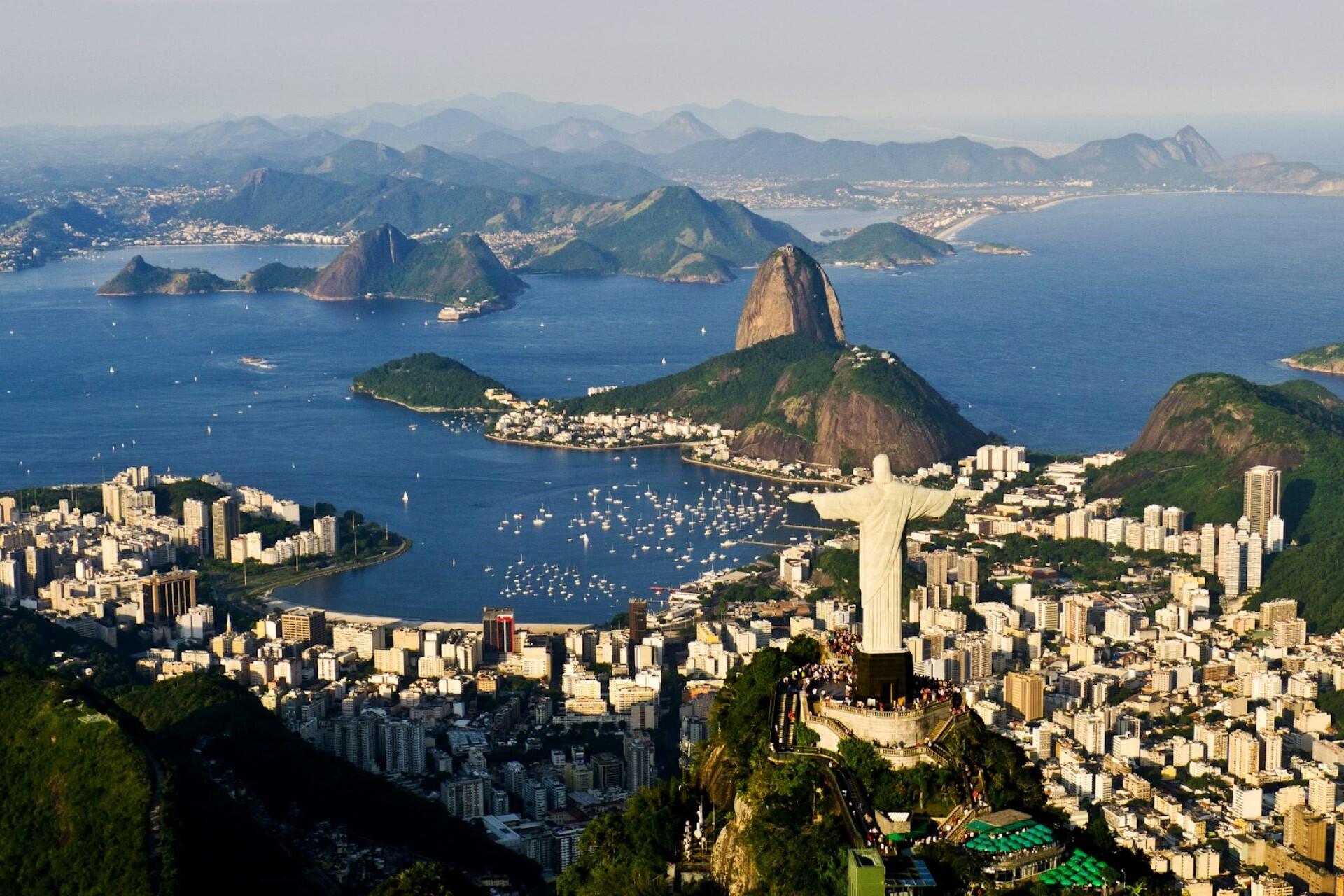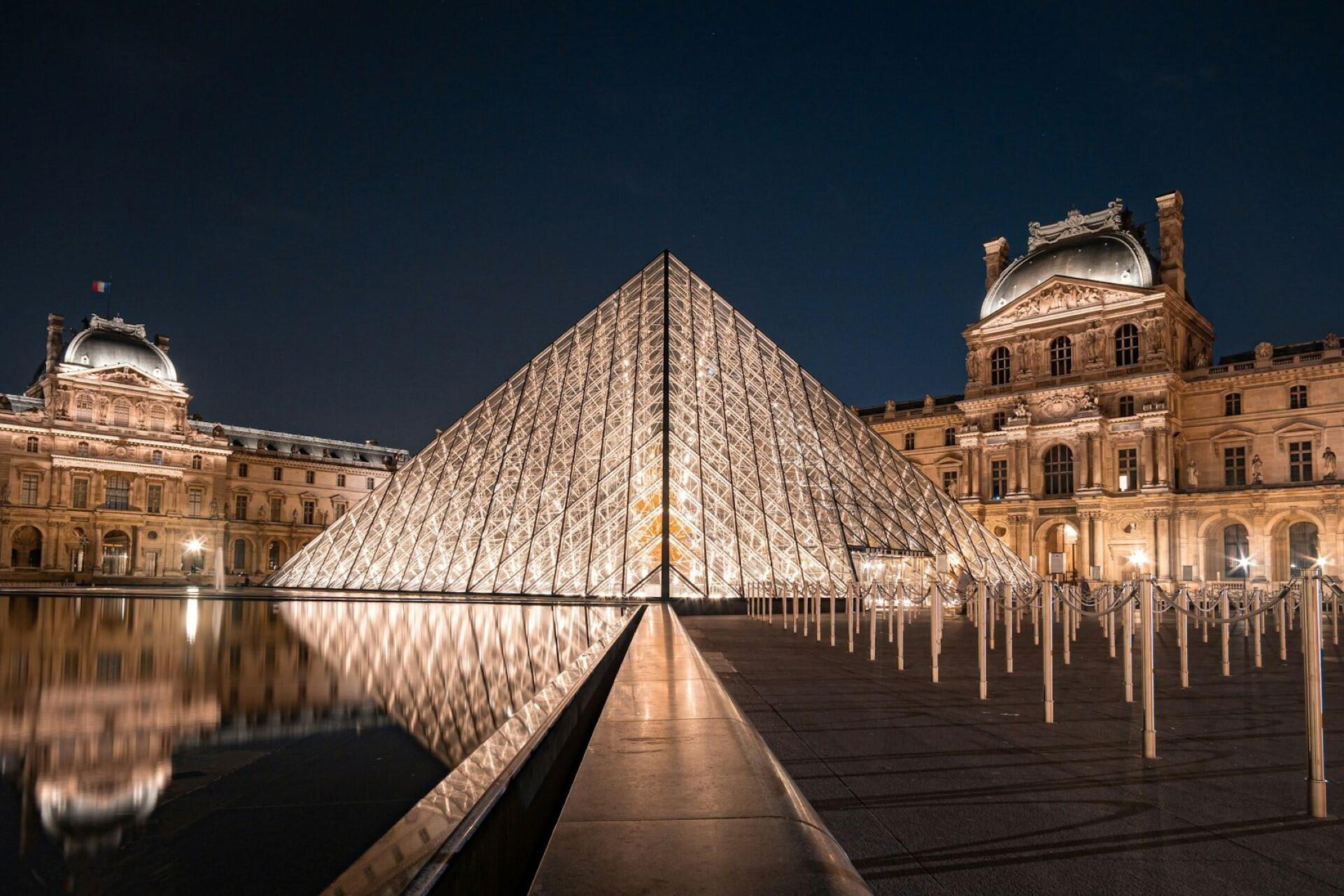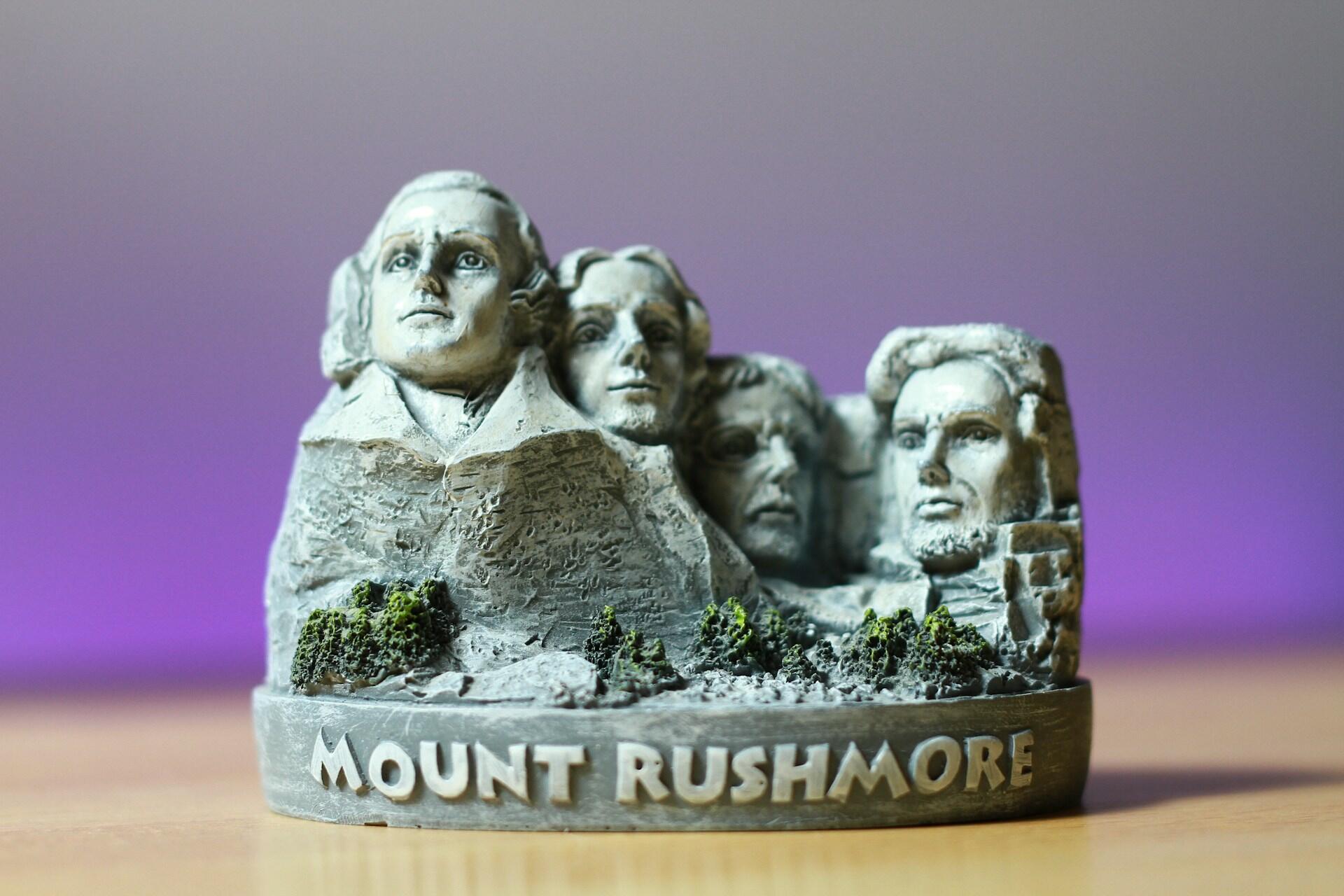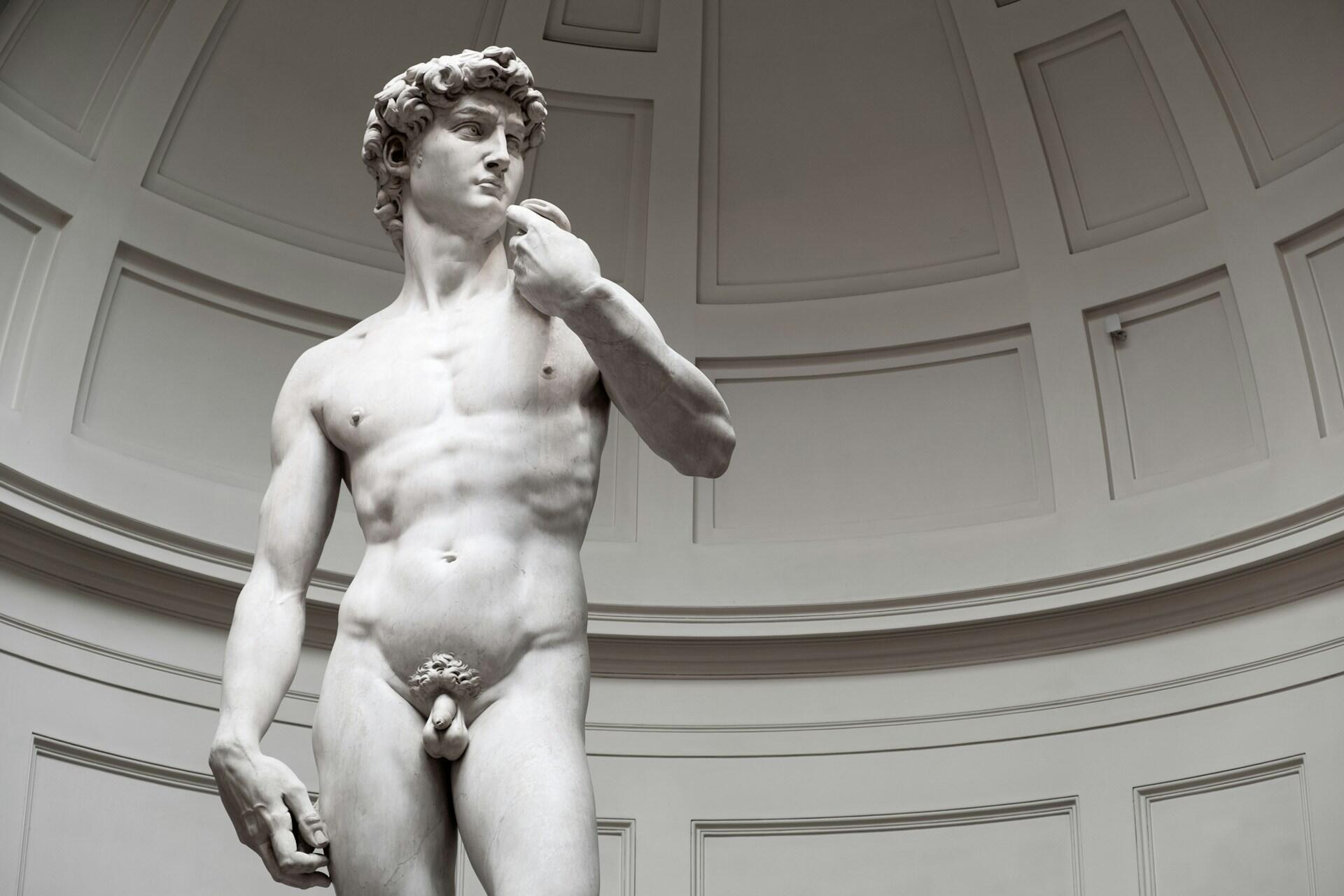Sculpture is a timeless universal art form, with famous sculptures being found all over the world throughout human history. Some sculptures and statues are so renowned that they're known by people all over the world. Here are just a few of them; if you think we've missed any of the essentials, please let us know in the comments.

The Great Sphinx of Giza
The Great Sphinx silently towers over the Giza Plateau. This is one of the world's oldest and most famous sculptures. It's thought to have been built around 2500 BC during the reign of Pharaoh Khafre.
The body of a lion with the head of a man, this sculpture likely represents the Pharaoh himself. It embodies the Egyptian ideals of divine royalty, spiritual power, and architectural genius. It has undergone significant erosion, with the nose notably missing. Millions of people visit this sculpture every year.
The Great Sphinx of Giza, one of the world’s most ancient statues, is located on the Giza Plateau near Cairo. Thought to date back to around 2500 BC, this colossal monument blends human intellect with lion strength, a powerful symbol of royalty, public art, and divine order.
Unlike the more polished marble sculptures of Michelangelo’s David or the cast bronze of Roman emperors, the Sphinx was carved directly from limestone bedrock. As one of the earliest examples of sculpture in history, it reminds us of the long-standing tradition of statues serving as both spiritual icons and symbols of political power.
Michelangelo’s David
Another instantly recognisable statue, this one is probably the most famous in the history of sculpture. Michelangelo's David is a defining symbol of Renaissance art. It was completed in 1504, when Michelangelo was still in his twenties and depicts the biblical hero David.
It's carved from a single block of Carrara marble and was initially intended for the roofline of Florence Cathedral. Instead, it was placed in a public square. You can see it today in the Galleria dell'Accademia in Florence, where it's visited by over a million people each year.
Though David is located in Florence, Rome arguably holds the highest concentration of statues and sculptures in any city in the world. From Michelangelo’s work in the Sistine Chapel to the Roman busts and marble monuments in every square, Rome offers a masterclass in sculptural evolution.
You’ll find everything from ancient sarcophagi to ornate fountains, such as the Trevi, making it a must-see on any visit or tour focused on art and history. This city is a living museum of human form and expression carved in stone.
The Statue of Liberty
Technically, the Statue of Liberty is called Liberty Enlightening the World, but it's so famous that everybody refers to it by its common name. Famously a gift from France to the United States.
Designed by Frédéric Auguste Bartholdi with the iron framework inside designed by Gustave Eiffel (the man behind the iconic tower that bears the same name). After all, if you know anything about the basics of sculpture, you'll know that something of this size won't stand up on its own. It depicts the Roman goddess Libertas holding a torch in one hand. In her other hand, she has a tablet inscribed with the date of American independence.
The Statue of Liberty, located in New York Harbor, is not only the most iconic statue in America, but one of the most recognised monuments in the world. Gifted by France and standing over 90 meters tall, Lady Liberty represents freedom, migration, and modern ideals.
Compared to classical works like David or the Buddha of Kamakura, she reflects a newer type of symbolism, forged in bronze, supported by Eiffel’s engineering, and deeply tied to America’s evolving identity. For those making a list of must-see public sculptures, this one is simply non-negotiable.
Christ the Redeemer
This famous statue is what most people associate with Rio de Janeiro, where it stands atop Corcovado Mountain. The statue is 30 metres tall and was finished in 1931. The sculpture portrays Jesus Christ with his arms outstretched. It's a symbol of peace, redemption, and spiritual openness.
It was declared one of the New Seven Wonders of the World in 2007. More than two million people visit the statue every year. While a religious icon, it's also a key part of Brazil's national identity.


Rodin’s The Thinker
This bronze sculpture, although initially envisioned as part of a larger work, ultimately became a standalone piece. As the name suggests, it depicts a person thinking. Many believe that the man is a poet or philosopher, physically embodying intellectual struggle.
There are actually 20 full-size castings of The Thinker around the world. The original is in the Musée Rodin in Paris, where it stands (technically sits) as a testament to the modern sculpture style.
visit these monuments and statues each year!
Nike of Samothrace
This ancient Greek sculpture is an outstanding representation of movement and emotion. It was created around 190 BC and is about 2.44 metres tall. Representing Nike, the Greek goddess of victory (where the sportswear brand gets its name), it shows her with her wings stretched behind her and her robes billowing in the wind.
This piece was discovered in 1863 on the island of Samothrace, but it's not at the top of the Daru staircase in the Louvre Museum in Paris. It's an excellent example of Hellenistic sculpture, a historical style of sculpture.

Moai Statues, Easter Island
The Moai statues of Easter Island (Rapa Nui) were carved by the Rapa Nui people between 1100 and 1600 AD. There are nearly 900 in total scattered across the remote island in the Pacific Ocean, with the average Moai measuring 4 metres in height. However, some are over 10 metres tall and weigh 75 tonnes! While there are plenty of great sculpture museums, these make the whole island an open-air museum!
into the air.
Terracotta Army of Xi'an
Buried with China's first emperor, Qin Shi Huang, this is a set of 8,000 life-size soldiers, 670 horses, and 130 chariots. Each figure is distinct, with a unique face, showcasing an incredible level of craftsmanship, particularly in the hair, clothing, and posture. Although the warriors were initially painted, most of the pigment has faded.
Mount Rushmore, USA
Mount Rushmore is one of the most famous landmarks in the United States and a fine example of large-scale public art. In Black Hills, South Dakota, this monument features 18-metre-tall faces of U.S. presidents: George Washington, Thomas Jefferson, Theodore Roosevelt, and Abraham Lincoln.
It took over 400 workers to carve Mount Rushmore between 1927 and 1941. The sculpture itself was designed by Gutzon Borglum. It's an iconic piece of sculpture, but it's not without its critics. After all, it's located on sacred Lakota land, and the fact that it depicts four American presidents probably doesn't help, either.

Buddha of Kamakura
The Buddha of Kamakura is a bronze statue of Amida Buddha. It's 13.35 metres tall and weighs around 93 tonnes. It was initially housed inside a large wooden temple but has been exposed to the open air since the 15th century, when a tsunami destroyed the surrounding structure. The Buddha is sitting in the lotus position with his hands forming the Dhyana Mudra, a meditation gesture. Millions of people have visited this site over the centuries, and it's often a highlight for anyone visiting a Japanese religious and cultural monument.

Whether carved in marble, cast in bronze, or moulded from clay, each of these sculptures and statues is a reflection of their history, values, power, faith, beauty, or meaning. Some of these statues have survived wars, the elements, and even relocation across the globe. From Ancient Egypt to New York today, they offer us an opportunity to consider their context and the incredible artistic skill and vision that went into their creation. Which sculptures would make your list?















